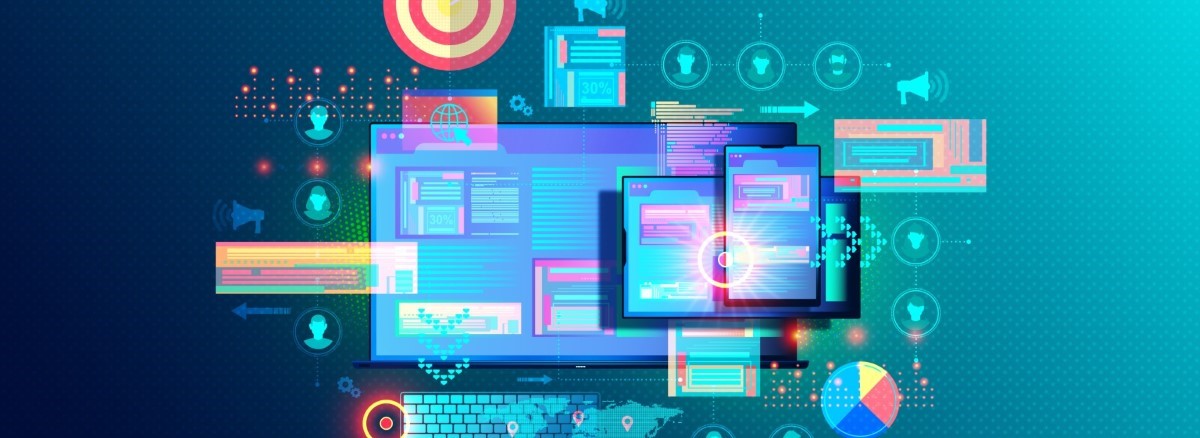In our high-speed digital world, we find ourselves flooded with a wealth of easily accessible information. The internet has not only transformed the way...
Omnichannel Attribution: The Impact Of A Multichannel Marketing Strategy
Omnichannel Attribution: The Impact Of A Multichannel Marketing Strategy
Omnichannel attribution typically produces better results, but it was previously difficult to achieve, particularly before the introduction of more powerful marketing technology such as customer data platforms (CDPs). Unfortunately, many marketers are still using out-of-date martech that does not allow them to unify their data on a large scale, forcing them to rely on simpler multi-channel models.
Understanding how omnichannel attribution works

Why does it matter, and how does it impact the marketing strategy?
Holistic Insights: Omnichannel attribution provides the whole customer journey, helping marketers allocate the resources from which the purchase has been made while simultaneously helping in campaign optimization.
Budget Distribution and Source Allocation: By assigning a value to each touchpoint and interaction, marketers can identify the channels that are most effective at generating impact, allowing them to focus their investments there rather than trying to use every available channel at once and experiencing no change.
Personalization: Personalized text messages and push notifications are always more efficient and interesting than standard and repetitious text messages. This enhances customer satisfaction and promotes conversions.
Enhanced Customer Experience: Omnichannel attribution enables companies to identify the unique preferences and behaviors of each customer. By analyzing how customers move between channels and which interactions drive the most engagement, companies can deliver more personalized content and offers. Customers feel valued and understood when they receive this level of personalization, which promotes stronger brand loyalty and a better overall experience.
Omnichannel Attribution Models:
Linear Attribution Model:
This model is particularly useful for understanding the full scope of customer engagement and how various touchpoints contribute throughout the journey. However, it might not accurately reflect the actual impact of each touchpoint, especially when some interactions are more influential than others.
Time Decay Attribution Model:
The Time Decay Attribution Model attributes more weight to touchpoints that occur closer to the conversion event. It recognizes that interactions closer to the conversion are often more critical in influencing the decision.
Algorithm Attribution Model:
This model takes into account a wide range of factors, including the order of interactions, the time between interactions, and the influence of each channel. Algorithmic models can provide highly personalized insights, adapting to the specific behaviors and preferences of different customer segments. While powerful, this model can be complex to implement and may require substantial data and computational resources.
Challenges in Implementing Omnichannel Attribution:
Data fragmentation: It can be challenging to separate out each interaction or touchdown the customer has had during their journey. Different data sources could cause the entire process to be inconsistent, which would disrupt the entire strategy.
Cross-device tracking: Since most customers use multiple devices to complete their purchases, it can be difficult to track down every platform, device, etc., which can result in inconsistent attributions or double-counting touchpoints.
The Future It Holds:
1. Predictive Analytics: In the future, attribution models will probably include predictive analytics to predict the potential influence of various touchpoints on conversions. Businesses can make better decisions about how to allocate resources for the greatest impact by examining historical data and customer behavior trends.
2. Improved Cross-Device Tracking: As the number of devices people use increases, cross-device tracking will become increasingly important. Modern tools like user authentication and device fingerprinting could give more precise insights into how customers move between devices.
3. Merging Online and Offline Attribution: This development will accurately attribute conversions by combining Online and Offline data. Using technologies like QR codes, NFC (near field communication), and location-based tracking to link in-store visits with online conversions may be necessary for this.
4. Customized Attribution Models: Companies may create attribution models that are adapted to specific customer groups. Businesses can develop attribution models that more accurately represent the distinct journeys and preferences of different customer groups by understanding the distinctive behavior of those groups.
5. Integration with Voice and Visual Search: As voice and visual search technologies gain popularity, it will be important to attribute the influence of these new channels. These new kinds of customer interactions will require future attribution models to change in order to take them into account.
7. Real-Time Attribution Insights: Businesses will work to obtain real-time attribution insights so they can immediately modify their marketing plans in light of the most recent information. Better customer experiences and more successful marketing campaigns may result from this agile approach.
8. Ethical Considerations: As privacy issues continue to influence the digital landscape, omnichannel attribution in the future will need to carefully navigate ethical considerations. Keeping customer privacy in mind while collecting data for attribution will be crucial.
9. Constant Evolution: It is unlikely that the field of marketing attribution will stay unchanged. It will change as a result of consumer behavior changes and technological advancements. Businesses that adopt a philosophy of constant improvement and adaptation will be most successful.
Author
Related Posts
Artificial intelligence (AI) has become an increasingly popular topic in the advertising industry, with many wondering if it will replace human workers..
Remember when we used social media platforms just to connect with new people and share personal experiences?


